#ojibwe art
Text
"Be cunning, and full of tricks, and your people will never be destroyed"
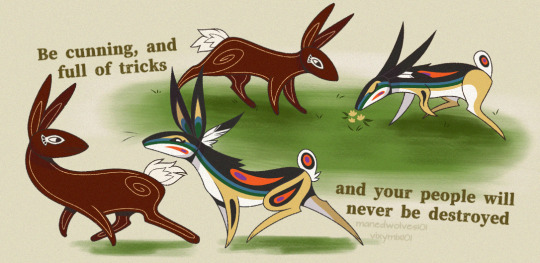
Okay for context the other rabbit is nanabozho! (Also called Wenabozho, Nanaboozhoo, Nanabush and Manabozho, they have a lotta names--) and he's a prolific and prominent character in many of my people, the anishinaabe (Ojibwe), stories!
I drew him interacting with el-ahrairah because he reminds me so much of nanabush-- they both have a connection to a higher power, their gods, both are tricksters, both are part of their respective creation myths, and both care deeply about their people!
Nanabozho is a shape shifter, while he takes many forms their most common is a hare! So that just made me think of them even more fjdndndn
(I posted this on insta a while back and the artist for the Watership Down graphic novel liked it and I still haven't recovered mentally from that--/pos)
Oh btw, nanabush is genderfluid, no I am not joking--
#art#digital art#fanart#watership down#watership down fanart#Watership down art#nanabush#nanabozho#Ojibwe#anishinaabe#anishinaabe art#Ojibwe art#el ahrairah#rabbits
1K notes
·
View notes
Text
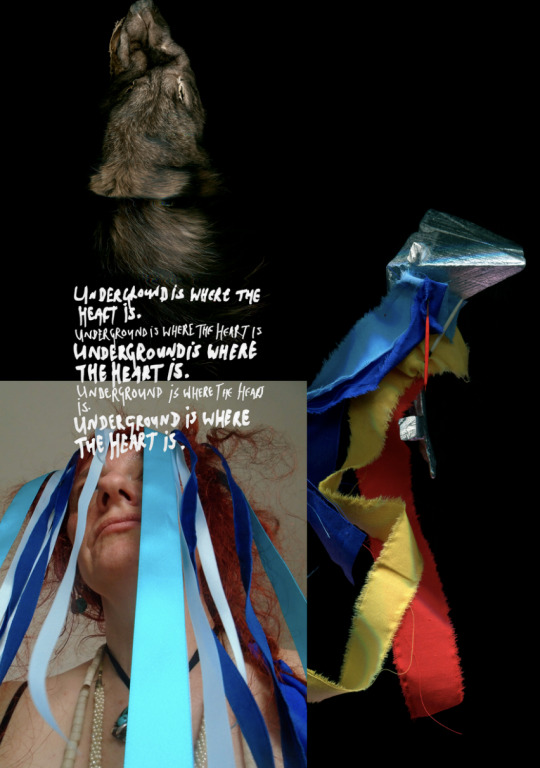
Atchin Ta / Biigiwen | Delaine Le Bas and Scott Benesiinaabandan
#romani#roma#romanichal#united kingdom#delaine le bas#art#native art#anishinaabe#ojibwe#ojibwe art#scott benesiinaabandan
9 notes
·
View notes
Text

#doodle#artists on tumbler#markers suck but it is all I had#traditional art#residential schools#rcmp#nun#small illustration#markers#my art#contemporary art#ojibwe art#anishinaabe#old art#need to post something at least
3 notes
·
View notes
Text
The Modern Spirit of George Morrison
The Modern Spirit of George Morrison
Katie Turner after George Morrison, watercolor, digital manipulations
George Morrison was an artist I hadn’t heard of before and the US Post Office has some new stamps out featuring his artwork. They are very colorful!
Morrison (1919-2000) was a Native American (Ojibwe) landscape painter from Minnesota. His Ojibwe name was Wah Wah Teh Go Nay Ga Bo which means Standing in the Northern Lights. …

View On WordPress
#art#art history#arts#creativity#George Morrison#Inspiration#Modern art#Native American Art#Ojibwe art#process#US Post Office
2 notes
·
View notes
Text

Article Link
"Minnetonka first started selling its “Thunderbird” moccasins in 1965. Now, for the first time, they’ve been redesigned by a Native American designer.
It’s one step in the company’s larger work to deal with its history of cultural appropriation. The Minneapolis-based company launched in the 1940s as a small business making souvenirs for roadside gift shops in the region—including Native American-inspired moccasins, though the business wasn’t started or run by Native Americans. The moccasins soon became its biggest seller.

[Photo: Minnetonka]
Adrienne Benjamin, an Anishanaabe artist and community activist who became the company’s “reconciliation advisor,” was initially reluctant when a tribal elder approached her about meeting with the company. Other activists had dismissed the idea that the company would do the work to truly transform. But Benjamin agreed to the meeting, and the conversation convinced her to move forward.
“I sensed a genuine commitment to positive change,” she says. “They had really done their homework as far as understanding and acknowledging the wrong and the appropriation. I think they knew for a long time that things needed to get better, and they just weren’t sure what a first step was.”

Pictured: Lucie Skjefte and son Animikii [Photo: Minnetonka]
In 2020, Minnetonka publicly apologized “for having benefited from selling Native-inspired designs without directly honoring Native culture or communities.” It also said that it was actively recruiting Native Americans to work at the company, reexamining its branding, looking for Native-owned businesses to partner with, continuing to support Native American nonprofits, and that it planned to collaborate with Native American artists and designers.
Benjamin partnered with the company on the first collaboration, a collection of hand-beaded hats, and then recruited the Minneapolis-based designer Lucie Skjefte, a citizen of the Red Lake Nation, who designed the beadwork for another moccasin style and a pair of slippers for the brand. Skjefte says that she felt comfortable working with the company knowing that it had already done work with Benjamin on reconciliation. And she wasn’t a stranger to the brand. “Our grandmothers and our mothers would always look for moccasins in a clutch kind of situation where they didn’t have a pair ready and available to make on their own—then they would buy Minnetonka mocs and walk into a traditional pow wow and wear them,” she says. Her mother, she says, who passed away in 2019, would have been “immensely proud” that Skjefte’s design work was part of the moccasins—and on the new version of the Thunderbird moccasin, one of the company’s top-selling styles.
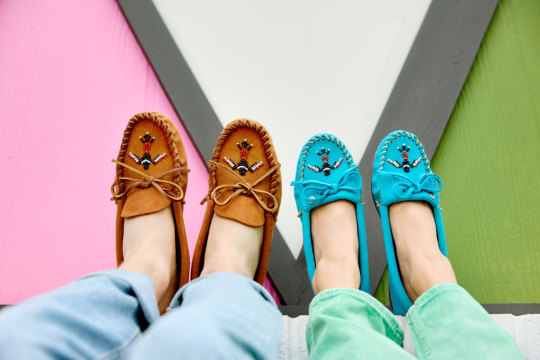
[Photo: Minnetonka]
“I started thinking about all of those stories, and what resonated with me visually,” Skjefte says. The redesign, she says, is much more detailed and authentic than the previous version. “Through the redesign and beading process, we are actively reclaiming and reconnecting our Animikii or Thunderbird motif with its Indigenous roots,” she says. Skjefte will earn royalties for the design, and Minnetonka will also separately donate a portion of the sale of each shoe to Mni Sota Fund, a nonprofit that helps Native Americans in Minnesota get training and capital for home ownership and entrepreneurship.
Some companies go a step farther—Manitobah Mukluks, based in Canada, has an Indigenous founder and more than half Indigenous staff. (While Minnetonka is actively recruiting more Native American workers, the company says that employees self-report race and it can’t share any data about its current number of Indigenous employees.) Beyond its own line of products, Manitobah also has an online Indigenous Market that features artists who earn 100% of the profit for their work.
White Bear Moccasins, a Native-owned-and-made brand in Montana, makes moccasins from bison hide. Each custom pair can take six to eight hours to make; the shoes cost hundreds of dollars, though they can also be repaired and last as long as a lifetime, says owner Shauna White Bear. In interviews, White Bear has said that she wants “to take our craft back,” from companies like Minnetonka. But she also told Fast Company that she doesn’t think that Minnetonka, as a family-owned business, should have to lose its livelihood now and stop making moccasins.
The situation is arguably different for other fashion brands that might use a Native American symbol—or rip off a Native American design completely—on a single product that could easily be taken off the market. Benjamin says that she has also worked with other companies that have discontinued products.
She sees five steps in the process of reconciliation. First, the person or company who did wrong has to acknowledge the wrong. Then they need to publicly apologize, begin to change behavior, start to rebuild trust, and then, eventually, the wronged party might take the step of forgiveness. Right now, she says, Minnetonka is in the third phase of behavior change. The brand plans to continue to collaborate with Native American designers.
The company can be an example to others on how to listen and build true relationships, Benjamin says. “I think that’s the only way that these relationships are going to get any better—people have to sit down and talk about it,” she says. “People have to be real. People have to apologize. They have to want to reconcile with people.”
The leadership at Minnetonka can also be allies in pushing other companies to do better. “My voice is important at the table as an Indigenous woman,” Benjamin says. “Lucie’s voice is important. But at tables where there’s a majority of people that aren’t Indigenous, sometimes those allies’ voices are more powerful in those spaces, because that means that they’ve signed on to what we’re saying. The power has signed on to moving forward and we agree with ‘Yes, this was wrong.’ That’s the stuff that’s going to change [things] right there.”"
-via FastCompany, February 7, 2024
#indigenous#indigenous artists#indigenous art#moccasins#thunderbird#native american#native american art#cultural appropriation#indigenous peoples#cultural representation#minnesota#minnetonka#minneapolis#red lake nation#ojibwe#anishinaabe#reconciliation#fashion#fashion news#good news#hope#indigenous designers#native artist#indigenous artist
1K notes
·
View notes
Text
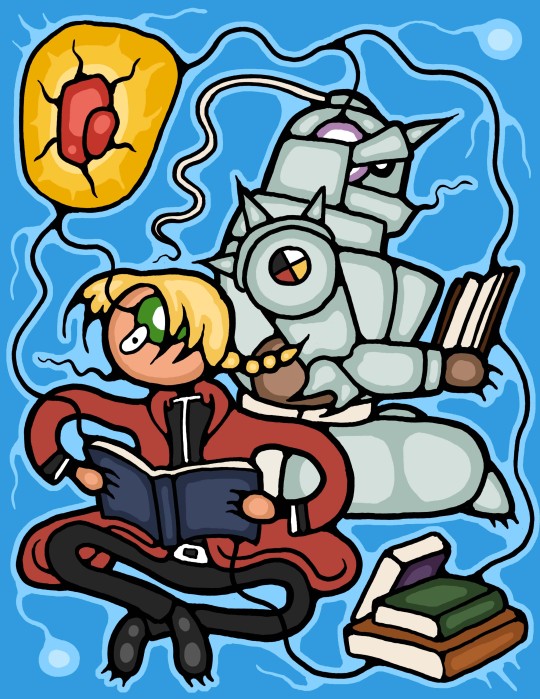
I'm putting together a sister account for all my anishinaabe style designs. It's not ready yet though. Here's some Full Metal Alchemist!
107 notes
·
View notes
Text
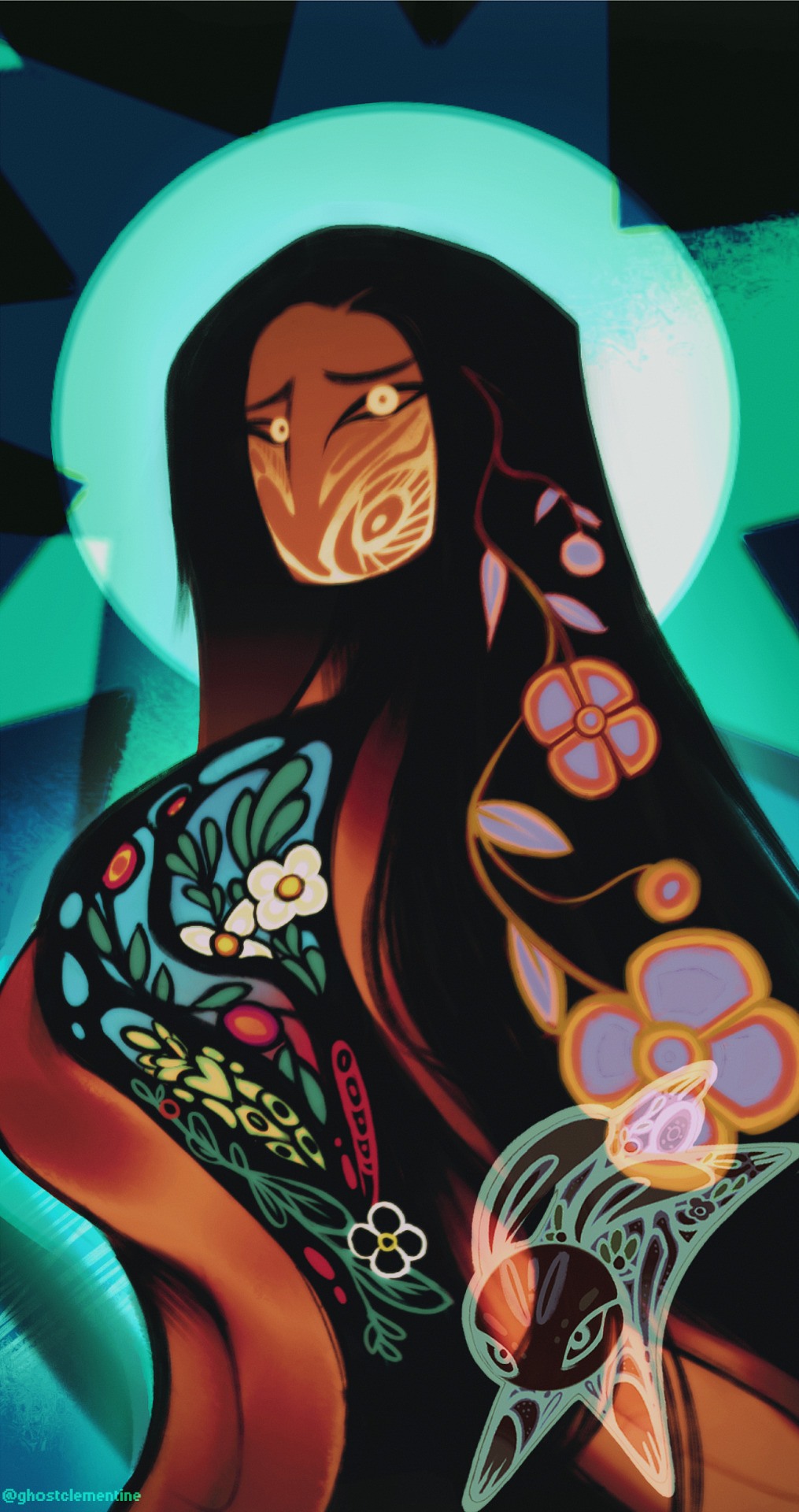
🐇👻 jiibayaabooz 👻🐇
• nanabozho beloved little brother who looks after the spirits in the spirit world.
(2021)
#my art#ghostclementine art#digital art#artists on tumblr#art#digital drawing#digital artist#anishinaabe#indigenous#indigenous art#indigenous artist#indigenovember#native artist#native art#ndn art#rabbit#bunny#spirit#beadwork#ojibwe#saulteaux#woodlands style
285 notes
·
View notes
Text
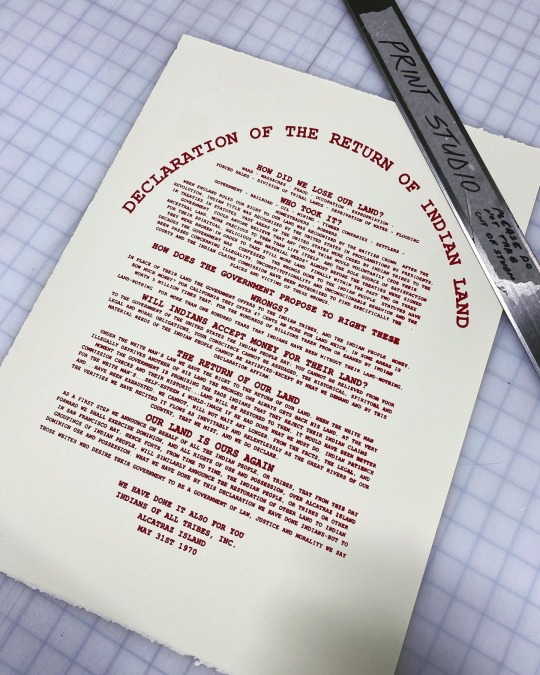
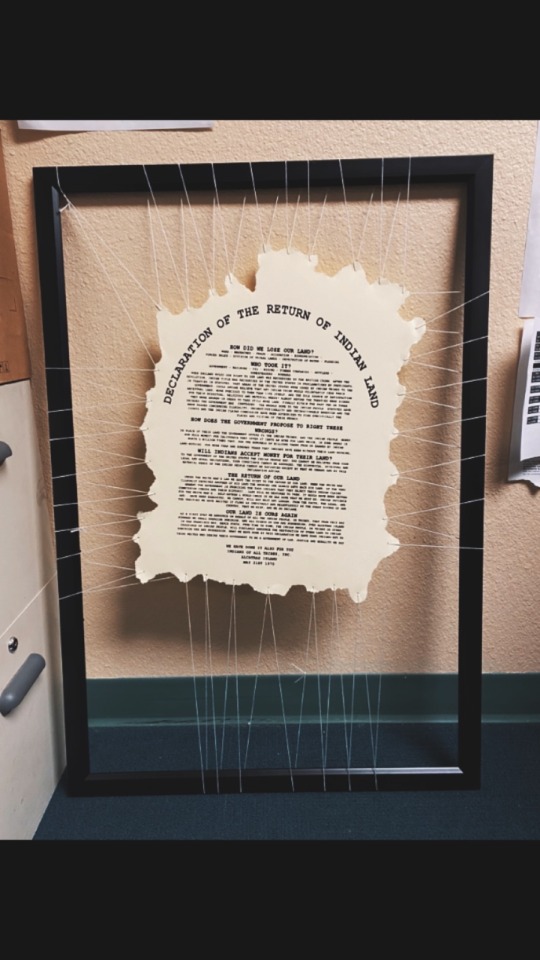
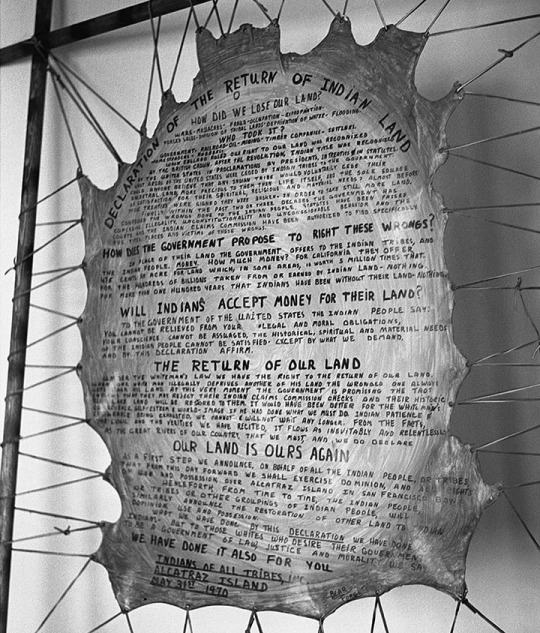
“Declaration of the Return of Indian Land”
Ryan Young
2023
Silkscreen print on paper, string, frame
Back in the printmaking studio for the first time in 4 1/2 years
#screen printing#native american#indigenous#ryan young#native#art#ojibwe#queer#two spirit#anishinaabe#artist#2 spirit
258 notes
·
View notes
Text
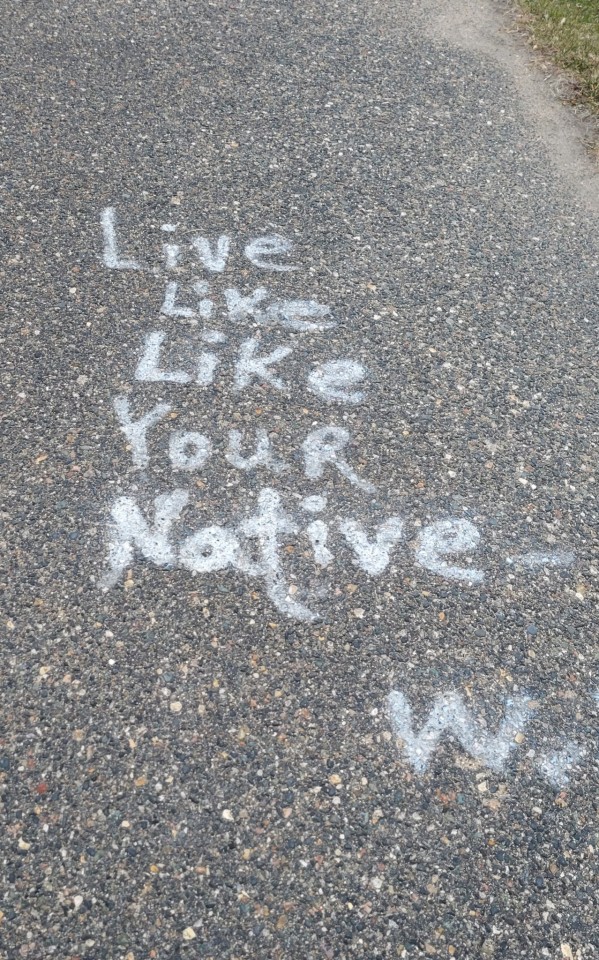
Imagine, the world so much better for it.
#mnojibwe #bemidji
24 notes
·
View notes
Text

Natives got some really good news today, so I’m gonna be indigenous on main about it, here’s Claire in regalia :)
#resident evil#claire redfield#i know the redfields were gonna be mohawk#but idk literally anything abt mowhawk regalia#so she’s just ojibwe snfnsnf#🔪art
57 notes
·
View notes
Text
More art of Nanabozho bc he is so silly and scrimblo!~

A doobius little creature getting up to mischief
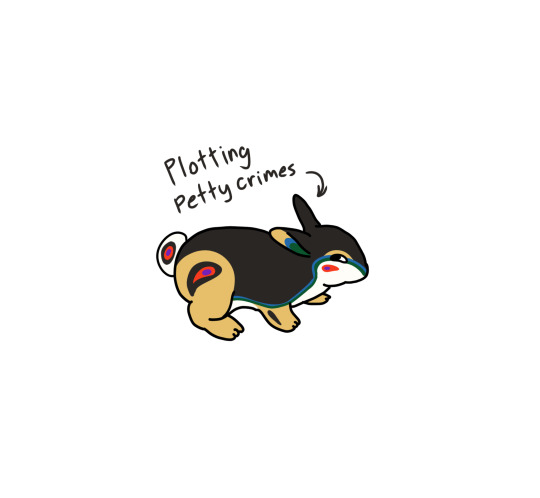
#art#digital art#nanaboozhoo#nanabush#nanabozho#wenabozho#anishinaabe#anishinaabeg#anishinaabe art#anishinaabe artist#ojibwe art#ojibwe#ojibway#ojibwa#first nations#native american#native#indigenous#indigenous art#indigenous artist#furry#furrydrawing#furry community#furry art#rabbit
38 notes
·
View notes
Text

#anishinaabe#traditional art#digital art#ibis paint drawing#contemporary art#three sisters#ojibwe#ojibwe art#original art#art#digital artist#artists on tumblr#artwork#celebrating culture
2 notes
·
View notes
Text
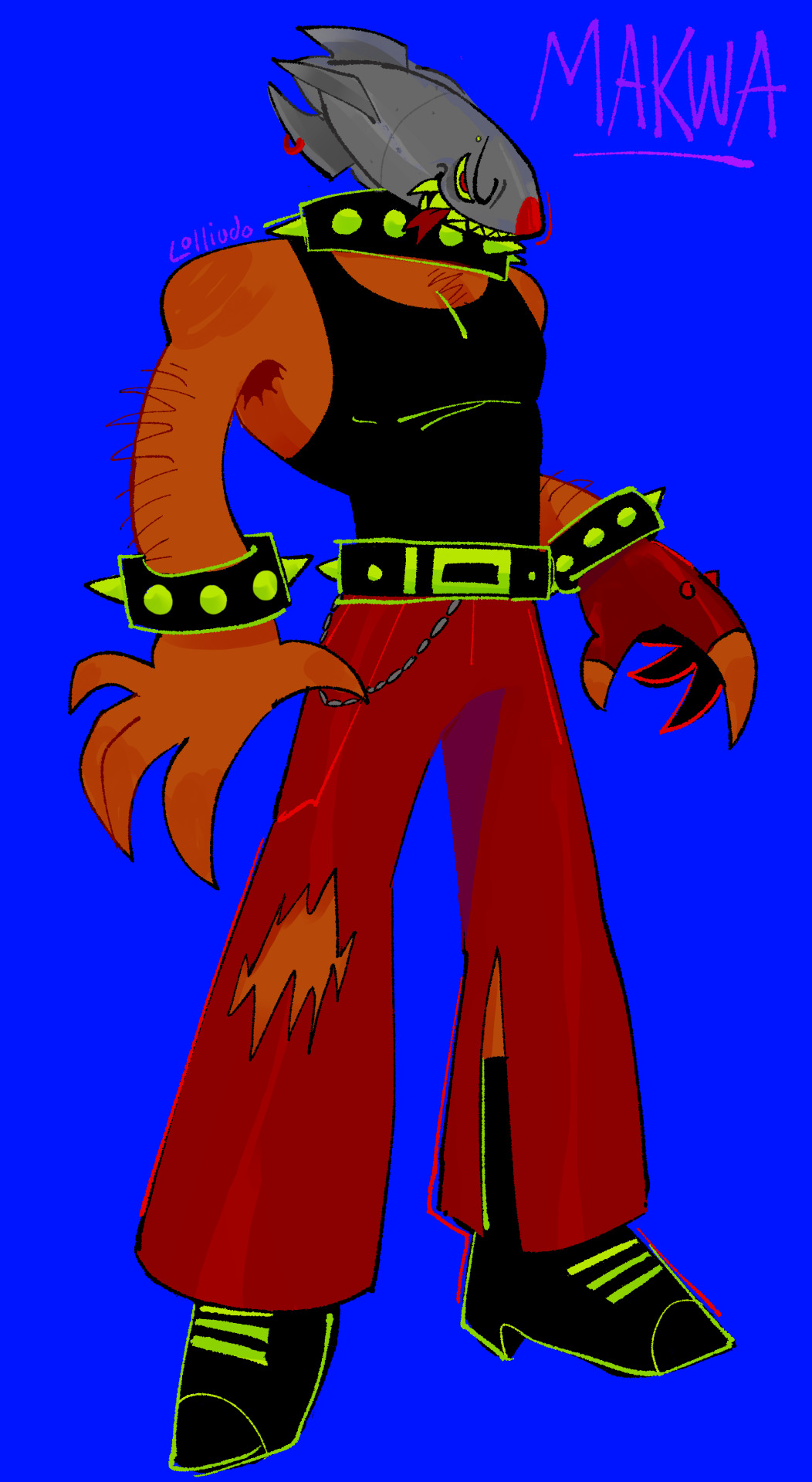
new oc :3 he / him
10 notes
·
View notes
Text

" Asibikaashi "
the spider woman who made the dreamcatcher
(2022)
#my art#ghostclementine art#digital art#artists on tumblr#art#anishinaabe#indigenous#ndn art#ojibwe#saulteaux#digital drawing#indigenovember#indigenous artist#native art#indigenous art#dreamcatcher#native artist#digital artist
86 notes
·
View notes
Text

George Morrison’s “Untitled” (1961) is the first work by a Native American artist to join the National Gallery of Art’s Abstract Expressionist collection.
#george morrison#art#artist#abstract art#abstract expressionsim#national gallery of art#native artist#ojibwe
91 notes
·
View notes
Text
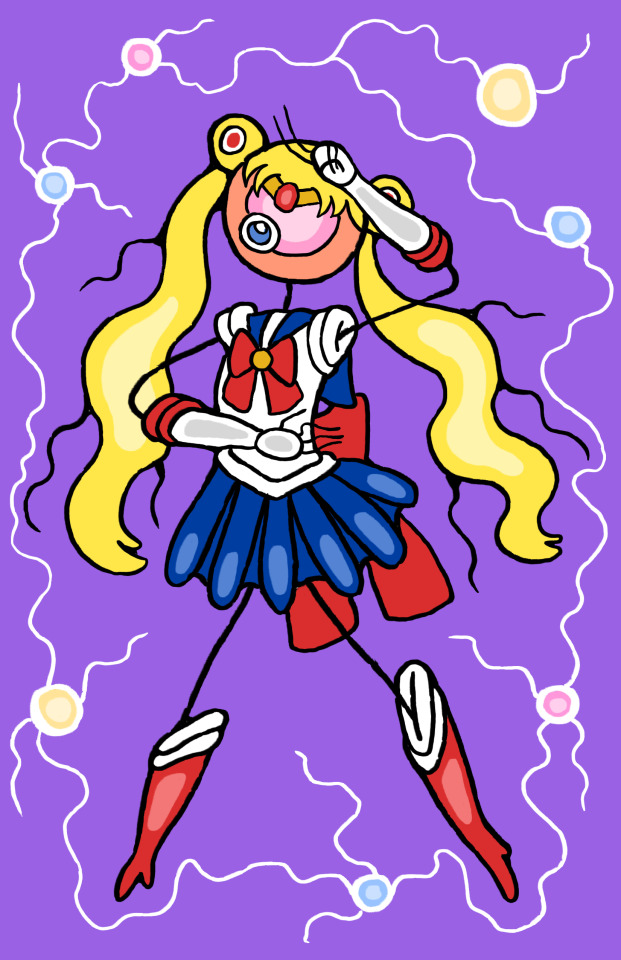
Hello. It's Sailor Dibiki Giizis.
23 notes
·
View notes